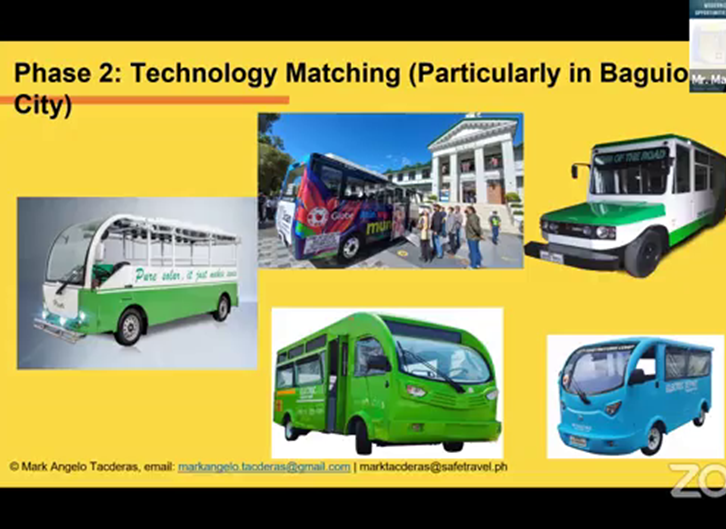A Thorough Assessment of the Strategies and Methods for Effective Transportation Advertising And Marketing Campaigns
Transit advertising campaigns provide an one-of-a-kind opportunity for brands to involve with varied audiences in vibrant atmospheres. As we discover these critical parts, it ends up being clear that the course to an impactful transit advertising and marketing method is both elaborate and rewarding, elevating the concern of how ideal to navigate these intricacies for maximum brand presence.
Understanding Target Demographics
Recognizing target demographics is important for the success of transit marketing campaign (Transit Advertising Philippines). Identifying certain audience sectors makes it possible for advertisers to customize their messages efficiently, making certain that the content reverberates with the desired viewers. This technique boosts engagement and makes the most of roi
To effectively assess target demographics, marketing experts must think about numerous key aspects, consisting of age, revenue occupation, level, and way of life preferences. For circumstances, a project targeted at young professionals may concentrate on benefit and modernity, while one targeting family members could stress safety and reliability. Furthermore, geographic elements such as urban versus rural settings can considerably influence consumer actions and choices.
Data collection methods such as studies, emphasis teams, and social media analytics give valuable insights into group trends and consumer practices. By leveraging this info, advertisers can craft compelling narratives that align with the worths and demands of their target market.
Eventually, understanding target demographics not only informs the tactical direction of transportation marketing campaign but also ensures that sources are designated efficiently. This targeted approach raises the probability of accomplishing campaign purposes, cultivating brand name loyalty, and driving conversions.
Imaginative Style Techniques
Reliable communication with target demographics relies greatly on ingenious creative style techniques en route marketing campaign. To efficiently capture focus in a jampacked visual setting, developers should focus on clearness and aesthetic effect. Using high-contrast components and vibrant shades can boost visibility, guaranteeing that messages are conveniently readable from a distance.
Integrating dynamic imagery that reverberates with the target market is vital. Aesthetic narration methods can stimulate emotions and produce memorable associations with the brand. Additionally, tactical use of typography aids communicate vital information rapidly; legible font styles and proper dimensions better boost readability.
Integrating interactive components, such as QR codes or augmented truth functions, can engage travelers past easy observation (Transit Advertising Philippines). These techniques not just promote customer interaction yet also connect the space between traditional marketing and electronic interaction
Furthermore, using room artistically-- whether on bus covers, transportation shelters, or train advertisements-- can result in innovative formats that break the mold and mildew of conventional marketing. By welcoming imaginative creativity while keeping brand uniformity, campaigns can promote a solid link with their audience, inevitably driving both recognition and activity. The assimilation of these layout techniques is critical for attaining effective transit advertising and marketing outcomes.
Strategic Placement Approaches
Optimizing the effect of transportation marketing pivots on see page calculated positioning techniques that ensure optimum presence and involvement. Reliable positioning includes understanding and assessing high-traffic areas guest demographics to recognize one of the most advantageous areas for advertisement displays. For instance, placing advertisements near entries and departures of transportation cars can catch the attention of boarding and alighting passengers, thus boosting direct exposure.
In addition, making use of both external and indoor surfaces of transportation cars can substantially widen reach. Outside ads, visible throughout commutes, involve pedestrians and various other chauffeurs, while indoor ads target passengers in a restricted setting. In addition, placing promotions in transportation centers, such as bus terminals or train stations, enables for enhanced impacts as commuters transition between different modes of transportation.
Timing is likewise important; lining up the project launch with peak travel periods maximizes target market involvement - Transit Advertising Philippines. Moreover, leveraging electronic screens en route environments can help with vibrant content, offering real-time updates and enhancing individual communication. By using these calculated placement approaches, marketers can make certain that their transportation advertising and marketing projects achieve optimal visibility, reverberate with the target audience, and eventually drive preferred outcomes

Determining Project Performance
To assess the success of transportation marketing campaign, it is necessary to employ a variety of measurement techniques that give insights into target market interaction and overall performance. One primary technique is making use of vital performance indicators (KPIs), such as reach, impacts, and involvement prices, which measure the number of people checked out the promotion and communicated with it.
Surveys and emphasis teams can likewise contribute in determining consumer assumptions and recall, permitting marketing experts to recognize the influence of their messaging. In addition, tracking web site web traffic and social networks engagement throughout and after the project aids determine direct actions to the advertising and marketing.
One more effective technique is utilizing location-based analytics, which can provide data on foot website traffic around details transit places, offering understandings into whether the campaign effectively captured the focus of travelers. Furthermore, evaluating sales information can reveal relationships in go now between transit advertising and marketing and raised income, supplying substantial proof of a project's performance.
Study of Success
Understanding the efficiency of transit ad campaign through measurement methods prepares for analyzing real-world examples that show successful results. One notable study includes a national drink brand that made use of bus wraps in metropolitan locations. The project intended to raise brand name exposure and sales throughout the summer months. By using geo-targeted digital ads and analytics, the brand name measured a 30% rise in sales in areas where the covers were plainly displayed, showing the direct influence of transportation advertising.
Another compelling instance comes from a local nonprofit organization that introduced a project on metro systems to promote a community occasion. The company incorporated dynamic visuals with QR codes directing travelers to an enrollment page. Post-campaign find out here evaluation disclosed a 50% boost in occasion presence compared to the previous year. Using direct involvement with technology intensified the campaign's reach and effectiveness.

Final Thought
In summary, effective transit advertising and marketing projects require a detailed strategy that incorporates an understanding of target demographics, cutting-edge style strategies, and strategic placement. Jointly, these approaches foster brand presence and maximize the return on investment in transit marketing campaigns.
Understanding target demographics is essential for the success of transportation marketing campaigns.Effective interaction with target demographics counts heavily on cutting-edge creative design strategies in transit marketing projects. By employing these calculated placement techniques, marketing professionals can guarantee that their transportation advertising projects attain maximum presence, resonate with the target audience, and eventually drive desired outcomes.
Recognizing the effectiveness of transit advertising campaigns through dimension methods lays the groundwork for taking a look at real-world examples that illustrate effective end results.In recap, effective transit marketing projects necessitate a detailed strategy that integrates an understanding of target demographics, cutting-edge style strategies, and calculated positioning.